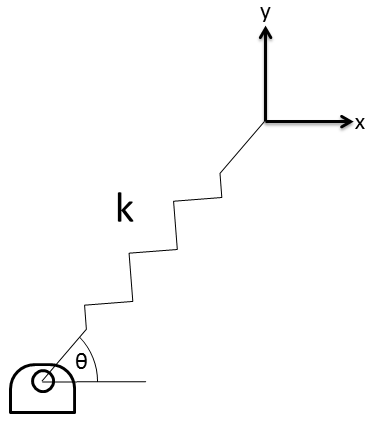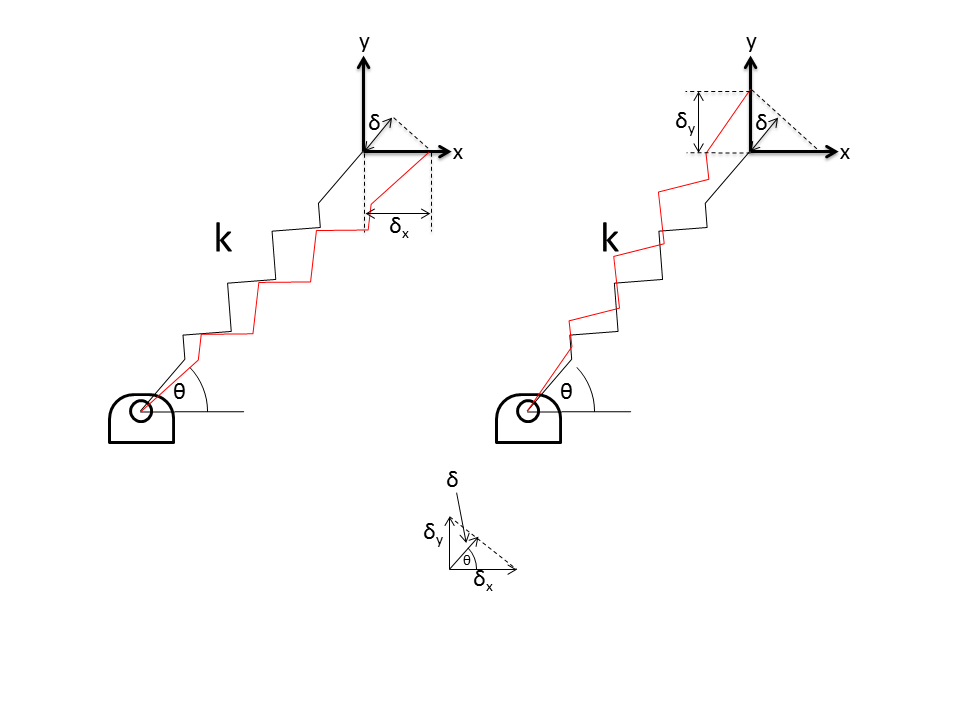This is an excerpt from Layton Hale’s lecture notes “Design and Analysis of Constraint Systems” from the November 2010 ASPE Conference.
Many engineers make a simple mistake when determining the equivalent stiffness of a spring that is rotated with respect to a coordinate system. Typically they find and
, which are both incorrect.

When we displace the spring in the x direction the compression of the spring along it’s axis is quite a bit less as you can see in the figure below. From the figures it is quite easy to see:
 It follows that the spring stiffness along the x-direction is:
It follows that the spring stiffness along the x-direction is:
We can then easily solve for the equivalent stiffness matrix as:
And now we can compute the forces along the rotated coordinate system as: